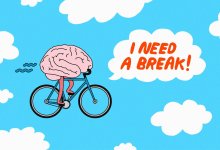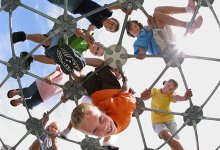Play & Recess
Learn about the importance of unstructured play, the research behind it, and tips on how to make time for it—even in high school.
How to Make the Most of Rainy-Day Recess
Preschool teacher-tested strategies for turning outdoor play into adventurous social and emotional lessons—no matter the forecast.3.4kYour content has been saved!
Go to My Saved Content.Brain Breaks for Your Classroom
Everyone Needs a Brain Break!Your content has been saved!
Go to My Saved Content.The Importance of Recess
Recess is often sacrificed to make room for more academics. The research says that’s a big mistake.4.2MYour content has been saved!
Go to My Saved Content.Using Movement to Teach Vocabulary
When students explore new words through movement, they understand them better, retain them longer, and feel more empowered to use them.Time to Play: More State Laws Require Recess
Unstructured playtime is making a comeback in schools as frustrated teachers, parents, and advocacy groups demand legislative action.928.1kYour content has been saved!
Go to My Saved Content.What’s Lost When We Rush Kids Through Childhood
The author of "The Importance of Being Little" on the costs of our collective failure to see the world through the eyes of children.856.6kYour content has been saved!
Go to My Saved Content.How Imaginative Play Can Help Young Children Heal From Adversity
Play can help children become fluent in the language of the nervous system, learning what their bodies and brains need in times of distress and dysregulation.2.1kYour content has been saved!
Go to My Saved Content.Longer Recess, Stronger Child Development
With an hour-long recess, elementary schools can help children develop through increased creative play, authentic SEL, and adequate physical regulation.874.9kYour content has been saved!
Go to My Saved Content.For Young Kids, The Power of Play-Based Learning
New research shows play-based learning can be more effective than direct instruction at improving outcomes for early learners—particularly in the development of mathematical and spatial skills.234.3kYour content has been saved!
Go to My Saved Content.Why Recess Should Never Be Withheld as Punishment
Experts argue that recess is necessary for a child's social and academic development, and skipping it as punishment for misbehavior or to accommodate more seat time is a serious mistake.233.8kYour content has been saved!
Go to My Saved Content.The Science Behind Brain Breaks
Research shows that breaks can provide more than rest. Use them to boost creativity, cognitive function, and social skills.206.2kYour content has been saved!
Go to My Saved Content.How a School Made Play Central to Learning
At a primary school in the UK, both students and teachers have become more engaged and curious as a result of a shift to a fully play-based approach—and learning has become more joyful for everyone.85.6kYour content has been saved!
Go to My Saved Content.How Children Process Grief and Loss Through Play
Young children will likely process the tumultuous events of 2020 in the only way they know how—through play. Here’s how adults can be supportive.165.2kYour content has been saved!
Go to My Saved Content.Communicating With Parents About the Value of Play in Preschool
Practical tips for helping families understand what their kids are learning amid the seeming chaos of a preschool classroom.8.3kYour content has been saved!
Go to My Saved Content.The Joy of Pickleball in Elementary School
Pickleball is an inclusive sport that focuses on strategy and team building and can be enjoyed by people of all ages. This makes it perfect for elementary schools!69.1kYour content has been saved!
Go to My Saved Content.












